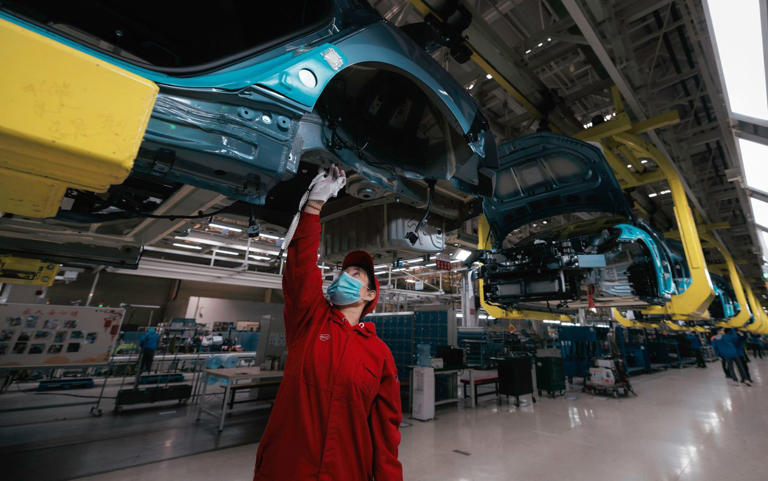China’s economic trajectory in the first quarter showcased a promising acceleration, propelled by Beijing’s concerted efforts to inject liquidity into the manufacturing sector. This strategic maneuver, however, has raised eyebrows internationally, particularly among Western governments and major emerging economies, who fear a resurgence of cheap Chinese imports that could undermine local industries and employment prospects.
Despite the palpable uptick in industrial output and heightened investment in manufacturing, persistent weaknesses in consumption and the real estate sector have cast a shadow over the extent of China’s economic rebound. Many economists argue that Beijing’s current initiatives might not be robust enough to adequately support Chinese households and foster a more balanced economic recovery. Concerns over a slight loss of momentum in March relative to previous months have intensified calls for additional stimulus measures to ensure the government achieves its growth target of around 5% for the year.
China’s National Bureau of Statistics reported a 5.3% expansion in the economy during the first quarter compared to the same period a year earlier, outpacing the 5.2% growth rate recorded in the final quarter of 2023. This growth was primarily fueled by increased industrial production and investment in manufacturing, reflecting Beijing’s deliberate pivot toward manufacturing and exports to offset subdued domestic consumption and ongoing challenges in the property market.
Beijing’s emphasis on dominating high-tech sectors such as electric vehicles and renewable energy equipment further underscores its economic strategy, as these industries are earmarked as key drivers for China’s future growth. However, this approach has not been without controversy, drawing scrutiny and criticism from international counterparts. The U.S., Europe, and other emerging economies are wary of potential disruptions to their own industries and employment dynamics, recalling the disruptive “China shock” experienced in the early 2000s when a surge in Chinese imports led to widespread job losses and industry upheavals.
China, in response, has staunchly defended its business practices, arguing that its companies engage in fair competition. Nevertheless, trade tensions are on the rise, with potential ramifications for the global economy, including the emergence of trading blocs aligned with either the U.S. or China.
While China’s first-quarter economic data points to the efficacy of Beijing’s strategy, it also exposes underlying challenges, such as a growing gap between supply and demand and declining capacity utilization in certain sectors. These persistent hurdles underscore the imperative for further measures to stimulate consumer demand and ensure a sustainable economic recovery.
Despite attempts to revitalize consumption, retail sales growth in the first quarter lagged behind industrial production growth, indicating lingering caution among Chinese consumers. Concerns about the property market, job security, and income levels have contributed to subdued consumer sentiment, prompting calls for more robust support measures from Beijing, including deeper interest rate cuts and increased government spending targeted at households.
In essence, while China’s economic outlook appears promising, uncertainties linger regarding the durability of the recovery and the potential global ramifications of Beijing’s manufacturing-centric strategy. The government faces the delicate task of balancing economic growth objectives with addressing domestic and international concerns about the uneven nature of the recovery.
